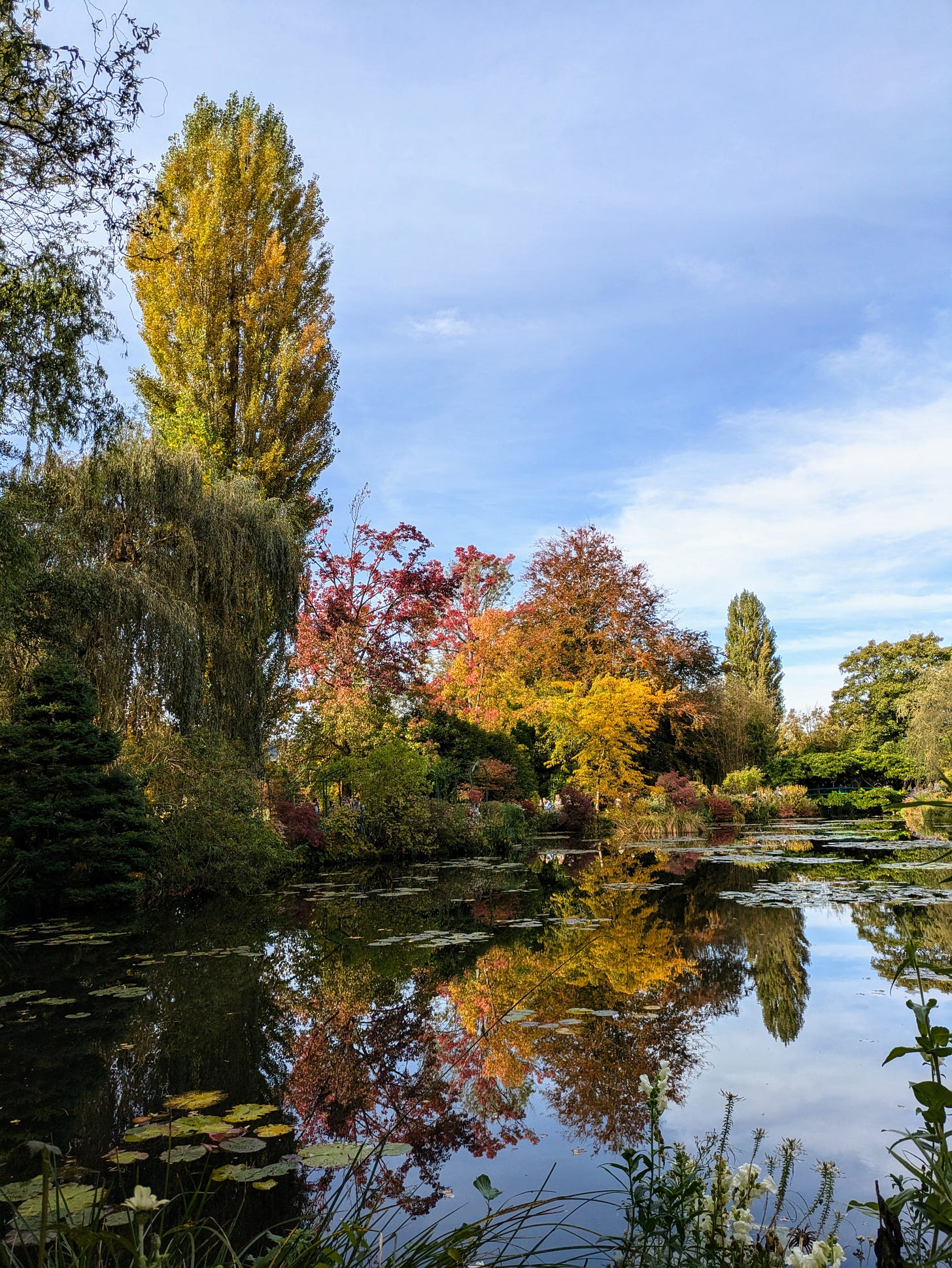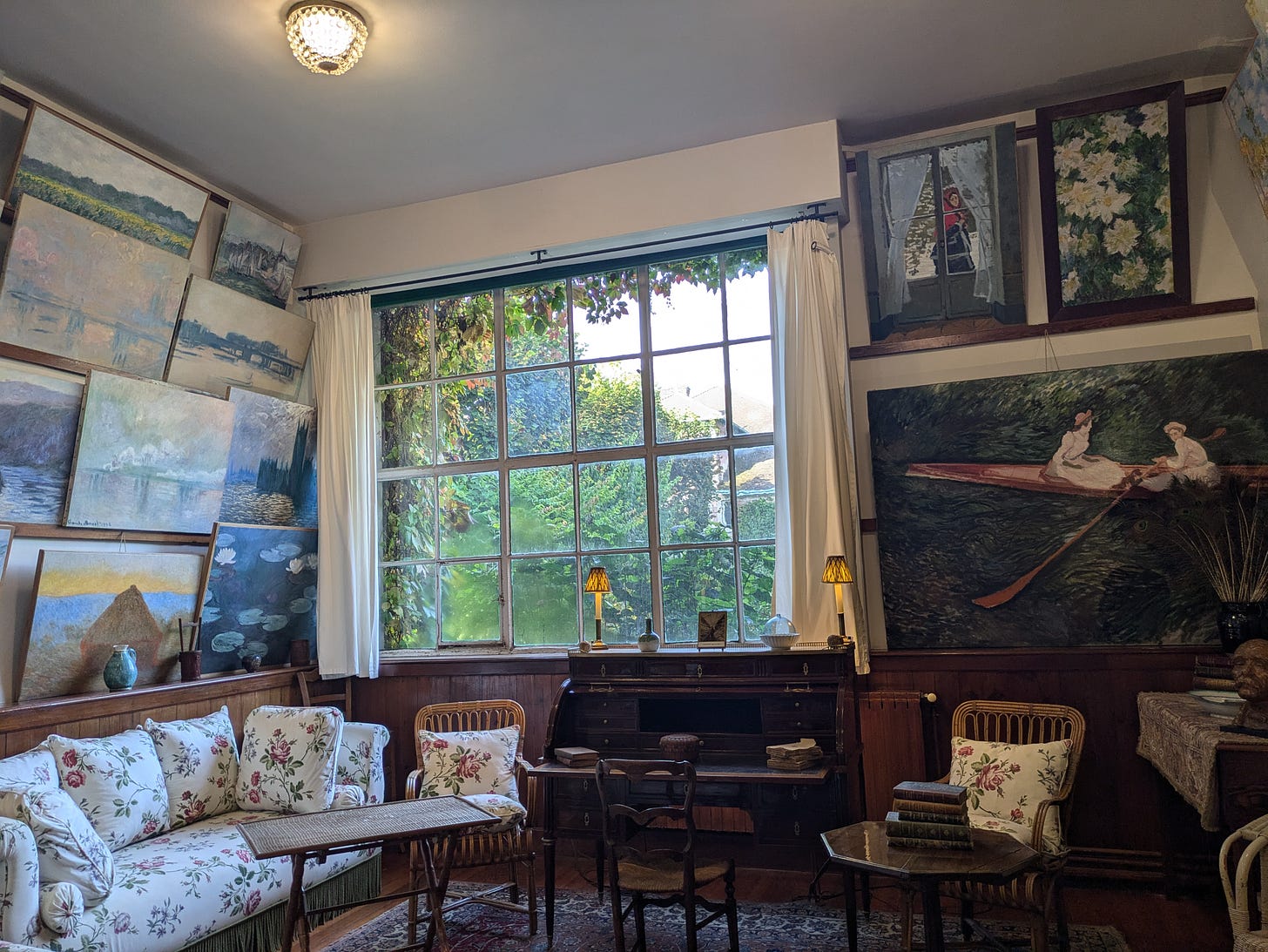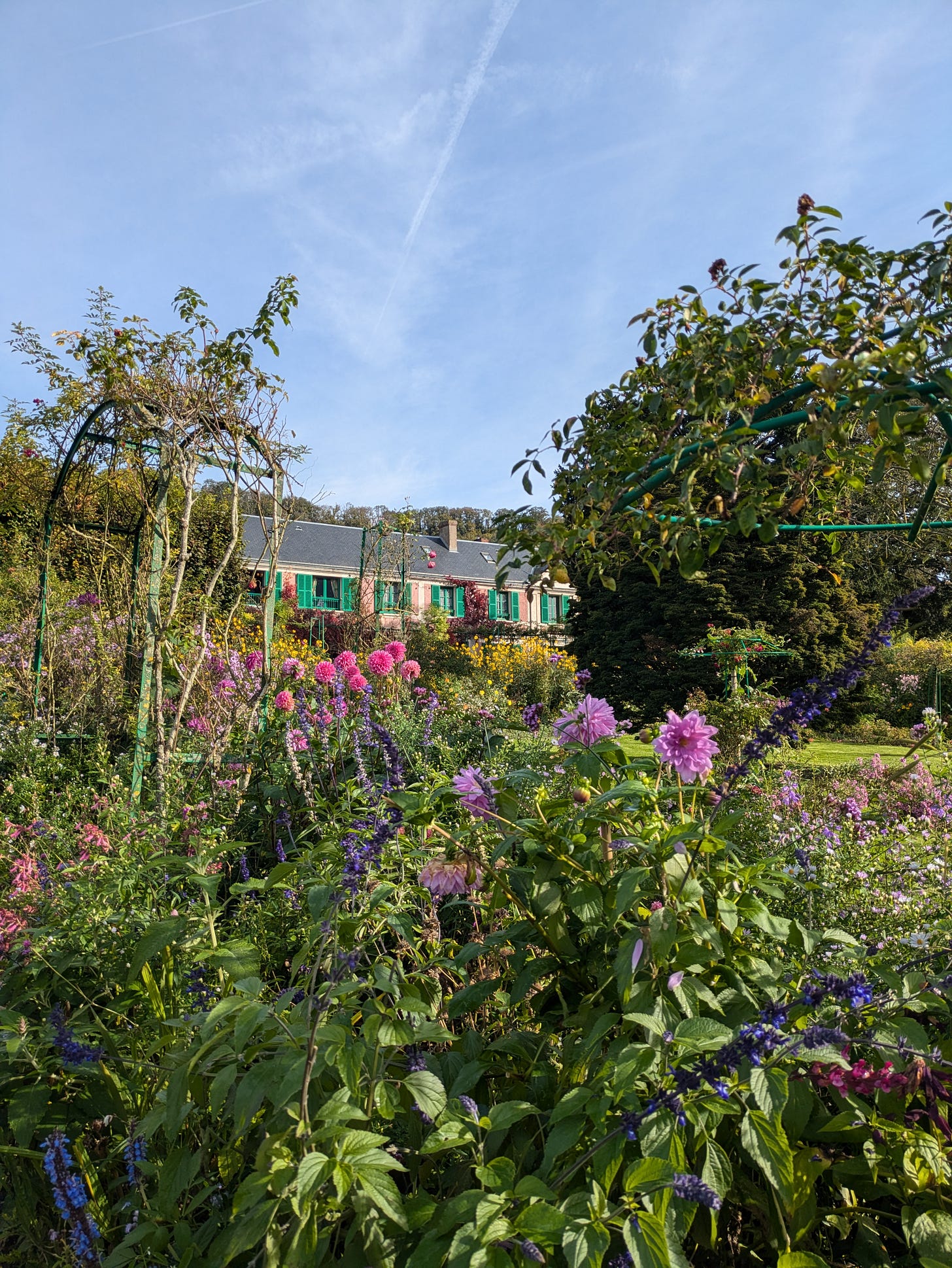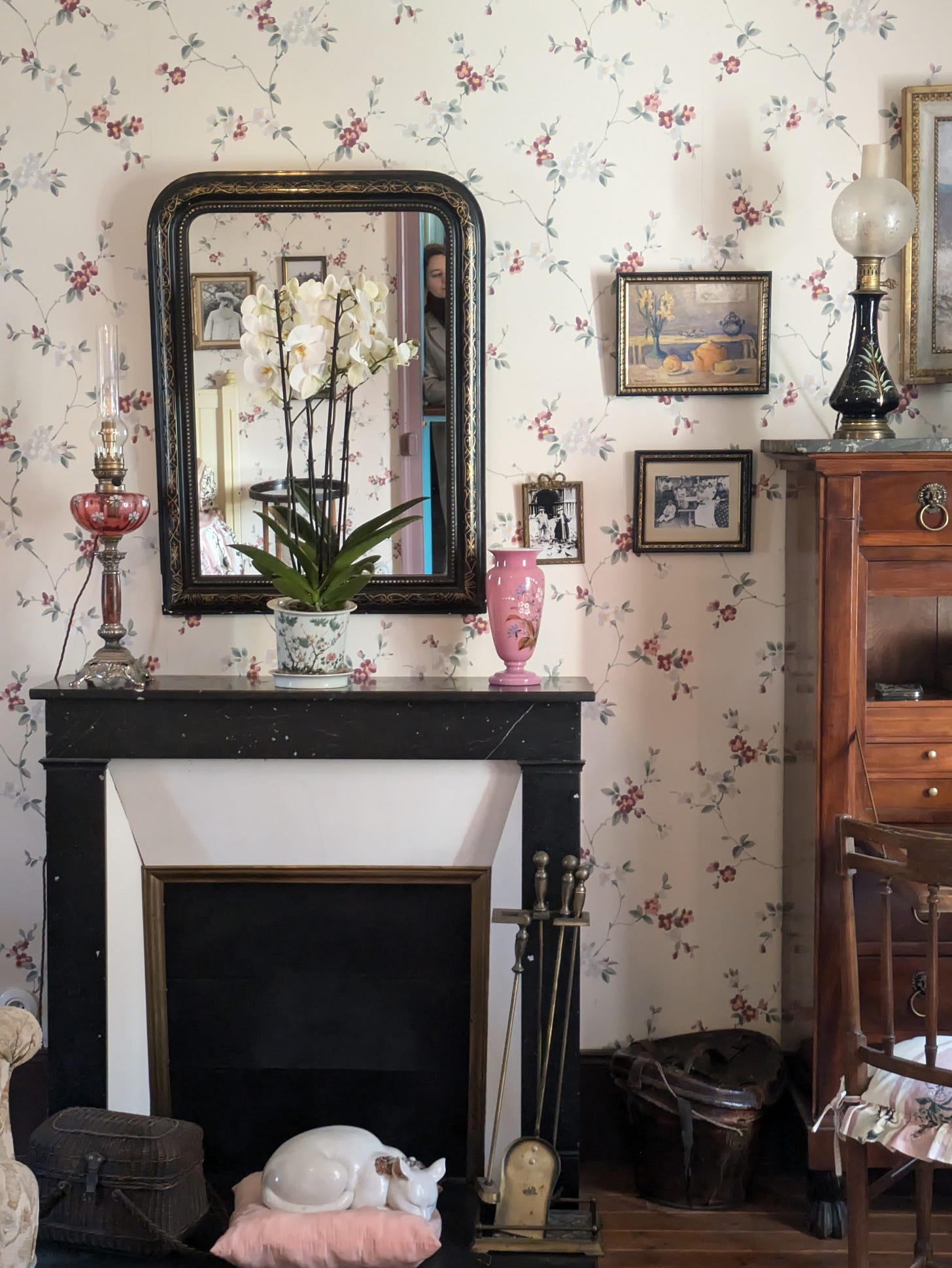Here in France our two-week Toussaint break has finally begun. Vacation for this Parisian usually means writing time, but I’ve been learning that breaks from all forms of work are necessary—both for health reasons and for the quality of the work.
Even though I’m eager to have uninterrupted time on my novel, I’m also going to practice just being for a few days.
Last Sunday I visited Claude Monet’s house and gardens in Giverny. The whole experience got me thinking about how different environments can impact our creative work. Monet made countless paintings of his gardens, and walking around the property is a beautiful, albeit confusing adventure: the line between reality and art isn’t clear.
In the gift shop, I was struck by one particular reproduction of Monet’s painting La barque à Giverny, also known as La norvégienne (1887).
I hesitated to write about this piece, as I haven’t actually seen the original. Conserved at the Musée d’Orsay, the painting isn’t currently on display. All I have to write from are reproductions (you can see a photo here) and the experience of being in Giverny.
Still, something about it begged to be explored.
The painting features three women in a boat, all wearing hats and white dresses, looking downwards. According to the Musée d’Orsay, the women were all children of Monet’s second wife Alice Hoschedé, one of whom married Monet’s son Jean. The daughters and the boat are mirrored in the water’s reflection, and vertical lines separate each woman from the other.
While the boundaries between the women and their reflection may be clear, the one between water and land is not. I was struck by the lack of sky in the frame, making this typically clear border even fuzzier. The women appear to be enveloped in an endless pool of green, rendering the scene so extreme in its earthliness it becomes unearthly.
The painting holds opposing movements: the stark white dresses of the upright women lift the eye vertically, yet the women’s gazes direct the viewer downwards to the reflection in the water. The mirror image offers more exposure of the women’s faces, as the brims of their hats no longer obstruct visibility. The water, however, manages to cloud any definition of this newly uncovered space.
The experience is one of looking in many directions, almost seeing everything.
The painting’s attention to opposing movements is complemented by a tension between likeness and difference in its subject.
Even though all three women wear nearly identical clothing and are literally in the same boat, their postures are varied: one is upright with one hand on her hip and the other on a pole, another woman sits with her hands in her lap, and third woman sits with both her hands working with a pole. Upon further examination, we notice that the women’s hairstyles and the details of their dresses are also slightly different. There is harmony in their likeness and an intrigue in their differences.
Great art reminds us to pay attention to detail. From far away, we might take this image to represent three different postures of the same woman. Looking closely, we know that relatives aren’t clones.
Thinking about this painting and my stroll around Giverny, I started to wonder what line could be drawn between art and reality. Is art a reflection of reality, and if so, does it become more or less true? What do reflections have to teach us about the world? What place could they have in our time, one so preoccupied with “facts” and objectivity?
It’s my personal belief that art can put a spotlight on a truth in a way that reality can’t always manage. Monet can take the sky out of his painting; in real life this feat is impossible (for now).
I think art and reality depend on each other. Artists need to explore reality in order to know where to shine their spotlight. In the best of circumstances, people’s reality is open to more questions after having experienced great art.
This week, when I take some time away from my writing, I’ll be working on finding the right place to direct my humble writer’s flashlight.
Wishing you all a great week.
à la prochaine !
Rachel







